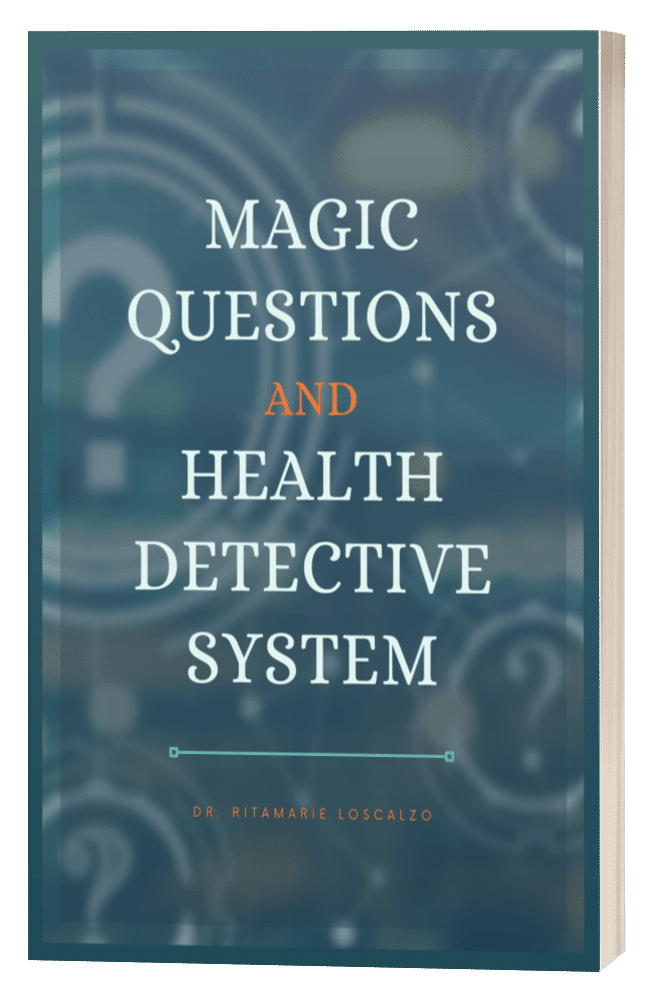HOME > reinvent healthcare podcast > A Common Reason for Fatigue and Low Energy and How to Effectively Test for It.
A Common Reason for Fatigue and Low Energy and How to Effectively Test for It.
By Ritamarie Loscalzo

Fatigue & Reasons Why You Have Them
One of the most common complaints I hear from clients is that fatigue and low energy is robbing them of their best life, and the challenge for those of us in functional medicine is figuring out the root cause.
Reson for Fatigue can be poor sleep, bad diet, hectic lifestyle, stress, toxicity, an underlying disease process or a combination of them all.
So where do we begin?
I created a very detailed process I call the “Fatigue Fixing Framework” that I teach health practitoners, so no stone is left unturned. I introduced it in a recent workshop and the replay is still available. You can register for it here.
One place to start is by looking at a comprehensive blood chemistry.
Although there is a lot more in the framework, this article will focus on looking for a possible iron imbalance.
When it comes to getting a sufficient picture of iron metabolism, I find that most people, practitioners and clients alike, don’t have a complete understanding of what should be tested or how to interpret the results.
I would love for this to change.
Anemia vs Iron Deficiency vs Iron Overload
Anemia
Anemia is a deficiency of hemoglobin, the part of the red blood cell that carries oxygen to the body. A common cause is blood loss, but it can also be due to nutrient deficiencies, certain medications, or chronic disease such as rheumatoid arthritis.
Blood loss can happen quickly through injury or menstruation, or so slowly that a person may not even be aware they have chronic bleeding.
This type of slow blood loss can be a result of gastrointestinal disorders such as ulcers or intestinal polyps. It can also be a result of kidney or bladder tumors.
Symptoms can include fatigue, weakness, pale skin, and shortness of breath.
Iron Deficiency
Iron deficiency refers to a decrease in stored iron and usually occurs gradually. It happens when iron stores are slowly used up because not enough iron is consumed or not enough is absorbed by the gut to replenish the stores.
Signs of iron deficiency rarely appear until hemoglobin is affected. It can take several weeks after iron stores are depleted for anemia to develop.
Iron Overload
Of equal concern but less common is iron overload.
Although severe iron overload can result in hemochromatosis (gene mutations cause the most common type), even moderate levels can lead to premature aging and contribute to chronic diseases such as cancer, metabolic syndrome, cardiovascular disease, type 2 diabetes, liver disease, and neurodegenerative diseases such as Alzheimer’s.
This is because excess iron circulating in the blood can initiate the production of radical oxygen species (ROS) which creates oxidative stress that results in cell damage and other disease processes throughout the body.
This can be compounded when the body’s ability to produce its own antioxidants are compromised by poor diet and lifestyle.
Signs of iron overload include fatigue and weakness, joint pain, erectile dysfunction or loss of interest in sex, and darkened skin color.
How to properly test for iron imbalance.
One of the biggest mistakes I see made when looking for iron imbalances is the misconception that looking at serum iron is going to provide all the needed information.
To get a complete picture, the following tests are needed:
Complete blood count (CBC) – This measures the various cells within the blood including hemoglobin.
Serum iron – This measures the amount of iron circulating in the liquid part of blood.
Serum ferritin – Ferritin is the main storage protein for cellular iron reserves. The amount in the serum is indicative of the amount stored iron in the liver.
Serum transferrin – This protein transports iron from the gut to the cells that use it.
Things to look for.
Although the CBC will tell you if anemia is or isn’t currently present, it doesn’t tell you the cause, and it doesn’t indicate that there is an imbalance, and trouble could be just around the corner.
Low ferritin is the most sensitive indicator of early iron deficiency. If serum iron is normal, but ferritin is low, there could be an iron deficiency coming.
If both serum iron and ferritin are low, iron deficiency is indicated.
If serum iron and ferritin progressively fall below normal, transferrin can rise. This also strongly indicates an iron deficiency.
If serum iron is high and ferritin is low, or ferritin is high and iron is low, other things may be at play.
When iron is high and ferritin low, I question why? Why isn’t the excess iron being stored as ferritin? When ferritin is high and iron low, I question why the ferritin isn’t being mobilized. Often this indicates an inflammatory condition.
I’ve done a few workshops that detail this, and at our SHINE 2022 conference, I’ll be presenting a lot more on the subject.
Both low serum iron and transferrin can happen as a result of acute inflammation, and if chronic, is often misdiagnosed as iron deficiency anemia. This can be avoided by testing both iron and transferrin. Anemia of chronic disease will show transferrin as being subnormal or low-normal, not elevated.
Iron deficiency is just one of countless possibilities as to why clients suffer from fatigue.
Understanding how to decipher blood work is one of the quickest, most powerful tools a functional healthcare practitioner can use to get a better picture of the root cause of this debilitating problem.
And even if there is no definitive answer, it helps whittle down the possible reasons.
Lab work offers a window into understanding that has just recently become available. Being able to use it effectively puts a practitioner on the cutting edge of functional healthcare and helps to provide real answers for chronic conditions that the current broken healthcare system isn’t able to address.
This is why understanding blood work is a major focus in my Nutritional Endocrinology Practitioner Training (NEPT) program.
Our Reinvent Healthcare podcast has done a number of episodes about what I refer to as “The Energy Crisis” Tune in there for in-depth information about the biochemistry of energy metabolism, methods of testing for imbalances and how the mitochondria work.
Bringing real change to healthcare starts with bringing real answers to clients affected by conditions that rob them of their best life.
Comment below and share your energy crisis stories.
Resources
Intracellular Iron Transport and Storage: From Molecular Mechanisms to Health Implications – PMC
METABOLISM OF IRON STORES – PMC
Anemia of Inflammation or Chronic Disease | NIDDK
Iron-Deficiency Anemia | Johns Hopkins Medicine
Hemochromatosis | NIDDK
Share this:

Are you feeling stuck?
Do you feel as if something is missing from your practice that's keeping you from delivering breakthrough outcomes for your clients?.
Recent Posts
Our Programs
Nutritional Endocrinology Practitioner Training (NEPT)
The Mastery and Certification tier is our flagship program and provides everything you need to feel confident as a practitioner who knows how to get results that lead to healthy and happy clients.
Functional Assessment Mastery
Explore the relationships between the most important hormones and their relationship with nutrition.
Functional Nutrition Mastery
Learn how to support your clients to eat and supplement in a way that reduces and eliminates chronic symptoms.
Medical Disclaimer: The information on this website is not intended to replace a one-on-one relationship with a qualified health care professional and is not intended as medical advice. It is intended as a sharing of knowledge and information from the research and experience of Dr. Ritamarie Loscalzo, drritamarie.com, and the experts who have contributed. We encourage you to make your own health care decisions based upon your research and in partnership with a qualified health care professional.
Disclosure: Sometimes (but not always), when I share resources in my programs, newsletter, and on my website, I'm using an affiliate link, which means I do make money if you buy. My credibility is extremely important to me; therefore, I only endorse the products, services, and people I believe in. DrRitamarie.com is independently owned and the opinions expressed here are my own.
Click here to see our Privacy Policy.







